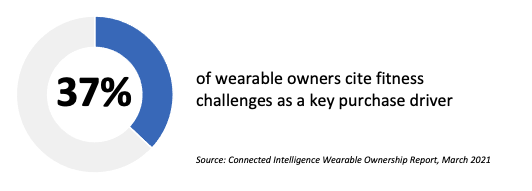
In this current world of virtual-ness, where video chats are more common than in person meet and greets, it seems perfectly natural that more and more consumers are looking for a connection between their fitness goals and those of their friends, family and colleagues. As a result, community fitness and wellness challenges are a bigger business than ever before in an attempt to make us put down the remote control and get some steps in.
But there are challenges with such fitness campaigns: what they actually track is often a small subset of our fitness reality. A case in point, I recently joined one such challenge only to discover that it was really a “step” challenge, not really a fitness one. If I went for a walk, or a run, the points racked up. But a trip to the gym to lift weights counted as… well, simply the steps it took me to walk to the gym (and it’s a short walk). And the 500 calories burned while windsurfing this past weekend also counted as nothing, even though I “traveled” five miles during the cold, wet adventure.
So firstly, let that be my excuse for why I will be nowhere near the leaderboard (ahem). But more importantly, we are clearly missing a broader view of fitness and wellness in these challenges. Steps alone are a start, but only a start. It’s not just the other types of work put that should be factored in but, in an ideal world, are consumption habits as well. After all, 10,000 steps to a fast-food joint for a double burger with all the trimmings is hardly the definition of “wellness” for aspiring fitness buffs.
But, for the sake of simplicity, let’s focus on what the smartwatch or fitness tracker can do, and ignore the consumption side. The challenge, I suspect, is that steps are the lowest common denominator among all the available devices. Wellness competitions need to be inclusive if they are aimed at a community and, once we move beyond steps, perhaps there are differences in how the various devices track us? Perhaps, but I’m still not convinced. My Garmin, for example, tracks calories burned as a metric. This means it can encompass any form of exercise, but it does require that the wearable has a heart rate monitor (which should be a reasonable cut-off point for any wearable these days frankly). More importantly, the harder you exercise, the more calories you will typically burn and the greater the reward. After all, 1,000 walking steps should hardly be equivalent to a 1,000 stride sprint.
Perhaps I am missing the real point, which is that these wellness programs are not about winners and losers, but more about participation. The simpler it is to join, the more people presumably will, pulling people away from their computers for a short break. That is obviously a Good Thing and something that I should probably leave well alone. But what that means is that the more competitive among us will look for more detailed challenges. That will typically require being within a hardware ecosystem. Perhaps, for runners, that will be Garmin, but for the mass market, it will likely be Apple, since it already owns more than half the smartwatch base at this point. If you friends are wearing an Apple Watch, and you want to jump into group competitions with them, you too will buy a Watch.
In other words, it behooves the rest of the smartwatch population to work out a better common denominator than just steps for these wellness initiatives.